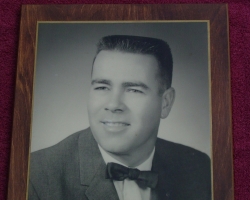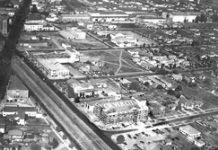
Questions are swarming about the history of a variety of local issues, starting with the mayoral rotation. Last week in Culver City, the city council voted unanimously to accomplish their annual reorganization. This traditionally occurs in April, the same month as local elections.
The good news is that there is a lot of local interest. The bad news is that these traditions are not easy to explain, but there is a reason for everything.
From the first board of trustees in 1917, inconsistency reigned with respect to the center seat on what became the city council. The first chair was R.P. Davidson. Harry H. Culver was appointed to the council in 1919, later elected, but never served in the ceremonial top seat. Another local favorite, Dr. Joseph Sullivan, served from 1952-1956, but never had the privilege of becoming mayor during his term. Joe Lawless, Ed Little and Bill Botts were never mayors. The last one not to serve as mayor appears to be John Carl Brogdon, whose time on the council ran from 1970-1974.
The probable reason for a system of rotation began in the 1960s, during Dan Patacchia’s eight years on the council. Known as the city’s “Mayor Emeritus,” Patacchia was elected to the council in 1960. The following year, he became the vice-mayor. In many organizations, it is accepted that an educational experience occurs as people move through the chairs. The council operated much that way. The year after Patacchia served as vice-mayor, he became mayor. However, once he was elected by his peers as mayor, he served in that capacity for six of his eight years on the council, until he retired in 1968. The next long-time mayor was Martin Lotz, who held that position from 1970-1974. Since Brogdon did not run for a second term, he never served as mayor.
Since that time, every councilmember has served at least one year as mayor. And in the case of some like Paul Jacobs, Richard Brundo and Richard Alexander, they served multiple times, which was before the institution of term limits. After term limits were instituted, Albert Vera served two consecutive terms, took time off and returned for a third term, thus serving as mayor three times, once in each term elected. Many others who served two terms, including Mike Balkman, Carol Gross, Steven Rose and Gary Silbiger, have only had the opportunity to serve once as mayor.
Apparently the irritation with the rotation spawned a council policy during this decade. In an effort to be fair, the waters have muddied somewhat since. Because the procedure does not take the staggering of elections into consideration, it just allowed one member to become mayor first – before becoming vice-mayor. Nothing is simple – or perfect.
And, by the way, the mayor only chairs the meetings, has one vote like the others and represents adopted council positions, not a personal opinion.












